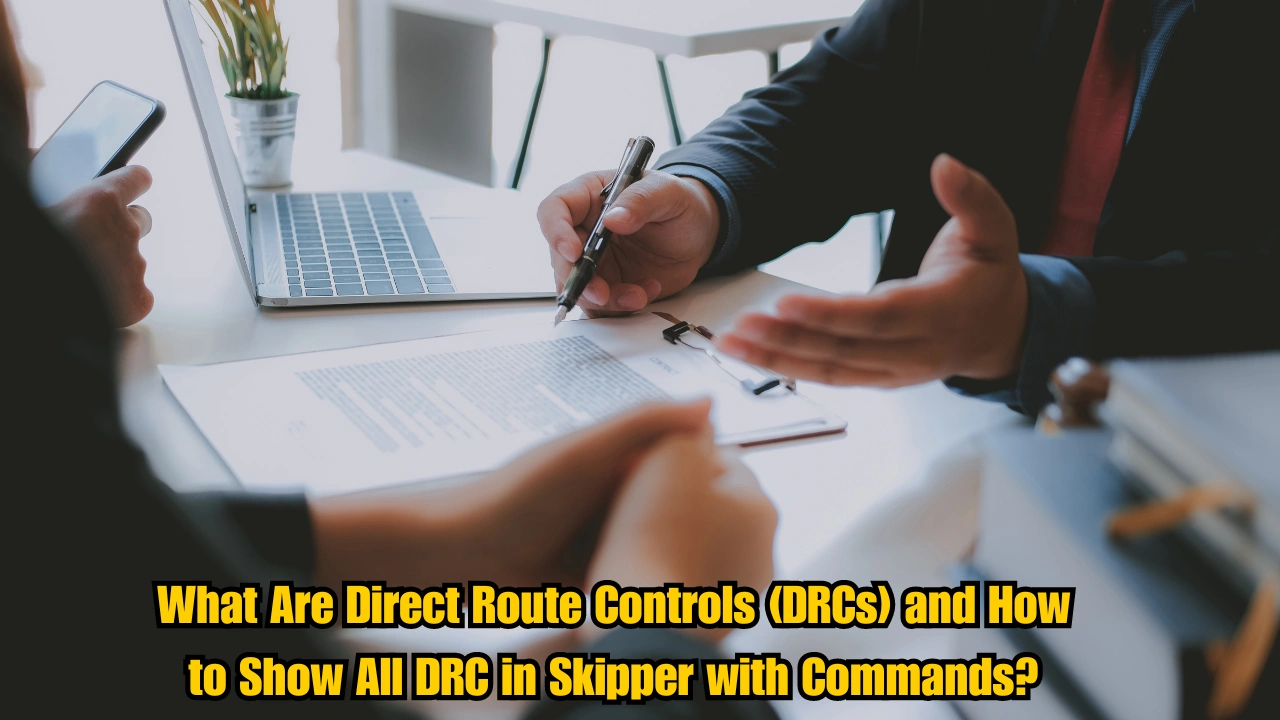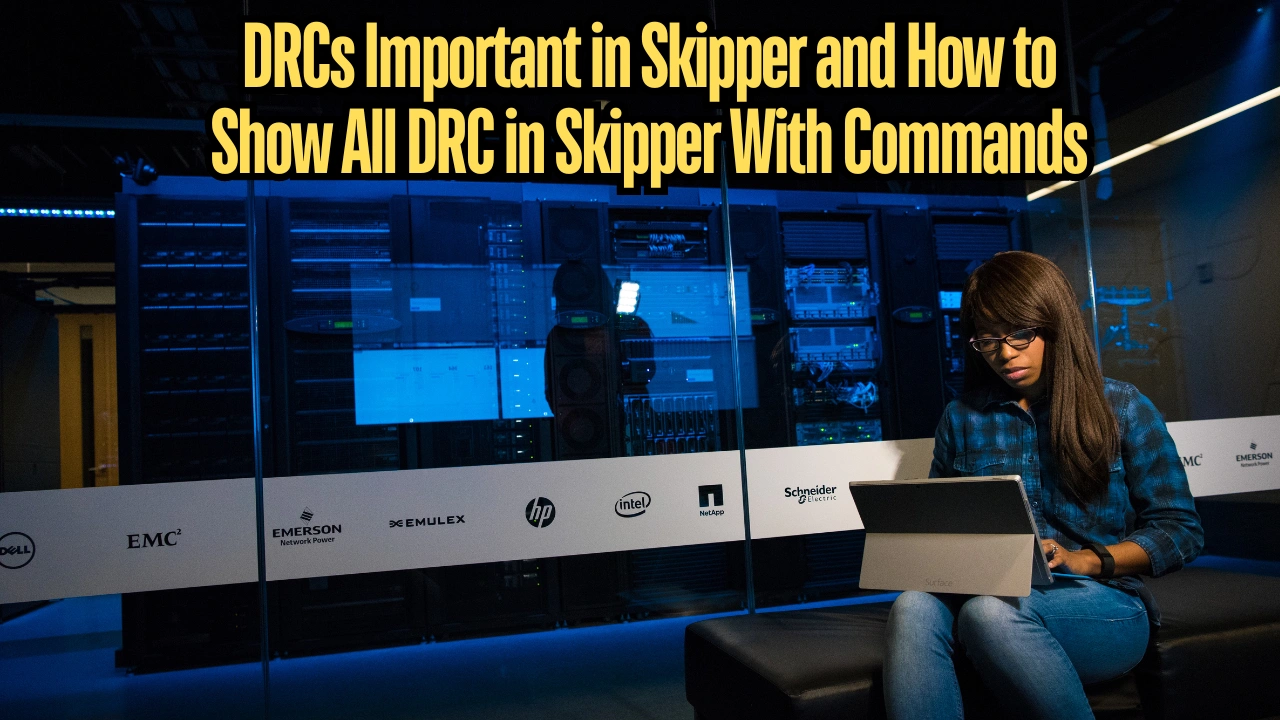How to Show All DRC in Skipper with Commands: Comprehensive Guide

If you’re working in network infrastructure management or DevOps, you’ve likely encountered tools designed to help streamline routing, configurations, and monitoring. Skipper is one such tool, a versatile open-source HTTP router and reverse proxy. It plays a key role in managing and balancing network traffic across services. In this article, we’ll explain how to effectively use commands in Skipper to display Direct Route Controls (DRC) and why understanding how to show all DRC in Skipper with commands is important.
By the end of this guide, you’ll understand how to leverage Skipper’s command-line interface to better manage your routes, improve network performance, and prevent potential issues.
What is Skipper?
Before we delve into how to show all DRC in Skipper with commands, let’s first cover the basics. Skipper is an HTTP router designed for dynamic routing in microservice architectures. Unlike traditional routers, Skipper allows you to configure routes in real time without restarting the service. This flexibility is key in environments that require frequent updates to traffic flow between services.
The tool uses .eskip files to define routing rules. These files are simple, flexible, and text-based, making it easier to adjust routing rules as necessary. Skipper is particularly useful for developers working with microservices that demand dynamic configuration changes, load balancing, and failover management.
What Are Direct Route Controls (DRCs)?
Direct Route Controls (DRCs) are essentially configurations within Skipper that dictate how requests are routed, filtered, and managed. They control the traffic flow and ensure that the routing rules set by the administrator are adhered to.

The DRCs specify several key elements:
- Path or URL patterns: Determines the route requests will follow.
- Service endpoints: Identifies the service that the request is forwarded to.
- Filters: Apply additional transformations to the requests.
- Load-balancing logic: Distributes the traffic among available servers.
Understanding how to show all DRC in Skipper with commands is crucial to ensure that traffic is routed efficiently, filters are applied correctly, and potential misconfigurations are caught before they cause issues.
Why Are DRCs Important in Skipper?
In any microservice-based architecture, proper routing is crucial. Misrouted traffic can cause bottlenecks, slow performance, or even system downtime. Direct Route Controls allow you to manage traffic efficiently, ensuring that requests reach the right endpoints without unnecessary delays.
Learning how to show all DRC in Skipper with commands helps you quickly view and diagnose potential routing issues. With complex networks, manually checking each route for errors is impractical. By using Skipper’s command-line tools, you can easily see all the current configurations and make adjustments as needed.
How to Show All DRC in Skipper With Commands
Now, let’s walk through the steps to show all DRC in Skipper with commands. Using Skipper’s command-line interface (CLI) can help streamline this process and save you time.

Step 1: Install and Configure Skipper
Before you can use Skipper commands, ensure the tool is installed and properly configured. Skipper is available on GitHub, where you can find installation instructions. Once installed, create your configuration file (.eskip), which will hold your routing rules. These rules will be displayed when you run the DRC commands.
Step 2: Access the Skipper Command-Line Interface (CLI)
Once the installation is complete, open the terminal or command-line interface. This is where you’ll execute all commands related to Skipper, including those to display DRCs. Skipper’s CLI is intuitive and allows for flexibility when managing routes, filters, and configurations.
Step 3: Run the Command to Show All DRCs
To display all Direct Route Controls (DRCs) in Skipper, the following command can be used:
skipper routesThis command lists all routes configured in Skipper along with the associated DRCs, filters, and load-balancing configurations. The output provides details such as the route’s URL pattern, its destination service, and any additional transformations applied to the request.
Example output:
Route: /api/v1/products -> Service: product-service
Filters: header("Authorization")
Load Balancing: Round RobinKnowing how to show all DRC in Skipper with commands allows you to identify potential issues and ensure your routing configurations are functioning as expected.
Step 4: View Specific Route Configurations
Sometimes, you may only want to view the configuration for a specific route rather than all routes. To do this, use the following command:
skipper route <route_name>This command shows detailed information for a specific route, such as the filters applied, the endpoint, and any load-balancing configurations.
Step 5: Monitor DRC Logs
For additional insights into how your DRCs are functioning, you can monitor the Skipper logs using:
skipper logsThis command provides real-time logs of your system, helping you monitor the flow of traffic and detect any issues with DRCs.
What Are the Common DRC Violations in Skipper?
In Skipper, a DRC violation typically means that there’s a misconfiguration in how traffic is routed. Common violations include improper URL patterns, incorrect filters, or inefficient load-balancing rules. By understanding how to show all DRC in Skipper with commands, you can quickly spot and resolve these violations before they cause larger issues.
Can You Customize DRC Commands in Skipper?
Yes, one of the advantages of Skipper is that you can customize DRC commands based on the specific needs of your infrastructure. For example, you can modify filters, URL patterns, or load-balancing rules to better fit the traffic patterns of your system. This flexibility is key in ensuring that your system remains efficient and adaptable to changes.
How Often Should You Check DRC Configurations in Skipper?
It’s best to check DRC configurations regularly, especially after making changes to the system or adding new services. Regular audits help ensure that the routing is optimized and no misconfigurations exist. Running commands frequently to display all DRCs allows you to keep your system running smoothly.
How Do DRC Commands Benefit Your Workflow?
Understanding how to show all DRC in Skipper with commands can significantly improve your workflow. Instead of manually inspecting each route and configuration, using commands allows you to quickly view all settings in one place. This makes it easier to:
- Diagnose routing issues quickly.
- Ensure filters and load-balancing rules are correctly applied.
- Optimize performance by removing redundant configurations.
Common Commands for Showing DRCs in Skipper
Here are some common Skipper commands you can use to display Direct Route Controls (DRCs) and ensure everything is functioning as expected:
| Command | Description |
|---|---|
skipper routes | Displays all routes and their DRC configurations. |
skipper route <name> | Shows details for a specific route. |
skipper logs | Provides real-time logs to monitor traffic flow. |
Conclusion
In today’s complex microservices-based infrastructures, managing routing configurations efficiently is critical. By understanding how to show all DRC in Skipper with commands, you can simplify the process of identifying potential routing issues, optimizing performance, and ensuring that traffic flows smoothly.
Whether you’re new to Skipper or have been using it for a while, mastering its command-line interface can make a significant difference in how you manage your routes and Direct Route Controls. The ability to view and manage all DRCs at once saves time, reduces errors, and ensures that your system is running as efficiently as possible. Keep refining your use of Skipper commands, and you’ll see the benefits in your daily operations.
Frequently Asked Questions
How can I show all DRCs in Skipper using commands?
You can display all Direct Route Controls in Skipper using the command. This command lists all active routes, including the filters and load-balancing logic applied to each.
Can I customize DRC commands in Skipper?
Yes, Skipper allows customization of commands to suit your routing needs. You can modify filters, URL patterns, or load-balancing rules to handle traffic more efficiently, depending on the structure of your microservice architecture.
What are common DRC misconfigurations in Skipper?
Common misconfigurations in DRCs include incorrect URL paths, improper filters, and inefficient load-balancing rules. These errors can lead to slow traffic or even system downtime.
How often should I check my DRCs in Skipper?
It’s recommended to check your DRC configurations regularly, especially after making updates or changes to your system. Frequent audits help catch and fix misconfigurations early, ensuring smooth operation.





